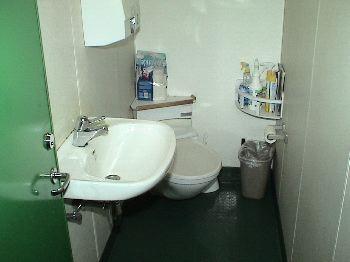26 January, 2004
By the time my shift started, we had been doing collecting seismic
data for about eight hours. I made my way down the stairs from the
01 deck to the dry lab on the 00 level. Huw Horgan, and no one else
greeted me. Jill Van Tongeren (MSU) had already headed up to the
bridge to do marine mammal observations. I was ready to start watch,
and Jerome Hall (OSU) scheduled to do ping editing. After about 50
minutes, the motion of the ship was more than I could handle. Jerome
had not made it to watch, and Huw graciously offered to let me go lay
down for a little while. That little while turned into five hours by
the time I awoke. Jill had been on the bridge all that time, and I
was just one of many that hadn't gotten their "sea legs."
I made it to the end of the shift and went back to my room to lie
down for a while thinking that the worst was over. Throughout the
course of the day most of the science party had a bout with motion
sickness. They were dropping like flies. It was clearly a day that
everyone would remember but would rather forget.
Collecting data with the seismic steamer entails making long straight
runs. Over the course of the day, the winds had picked up to over 20
knots, which had created some sizable swell. Depending on the
direction that the ship traveled, the ship's movements would be
predictable, and for those of us prone to motion sickness, we were
able to tolerate things with a little medication. In other
directions it seemed like there was no chance at all. We felt as if
we were being tossed and flopped about from the inside out. The only
safe haven was to be horizontal in our beds or bent over a bucket.
Neither place really made us feel much better.
A handful of the members of the science team made it through the
entire day. The Ross Sea had taken its toll on us. Data was
collected. Charts were plotted. Beam data was edited, but mostly we
slept and hoped that tomorrow would bring calmer seas and sea legs
for the rest of the cruise.

Restroom on the NB Palmer.

Contact the TEA in the field at
.
If you cannot connect through your browser, copy the
TEA's e-mail address in the "To:" line of
your favorite e-mail package.
|
